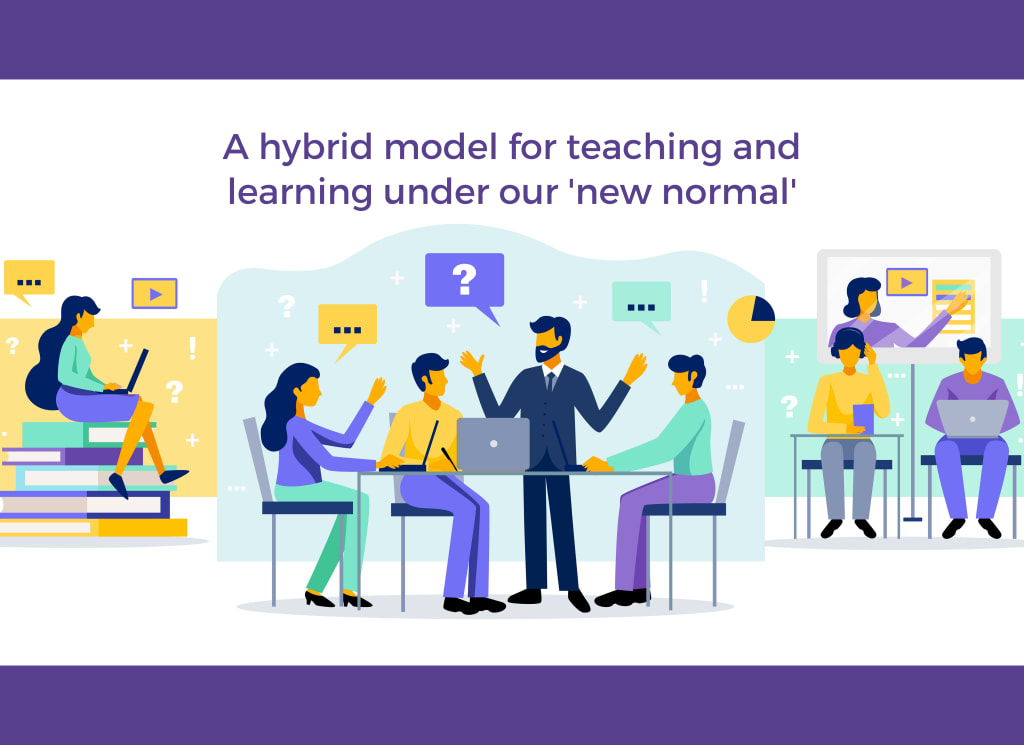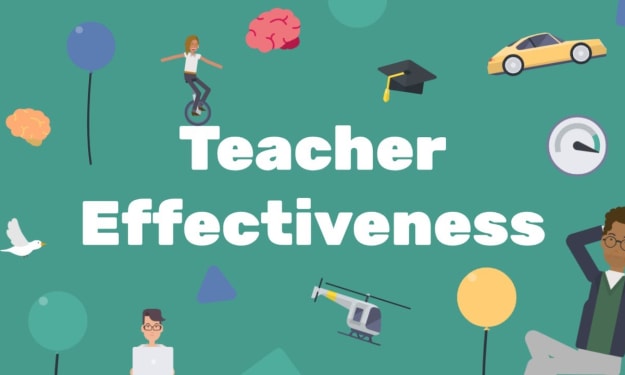Embracing the Future: The Rise and Evolution of Hybrid Learning Models Post-Pandemic
Hybrid Learning Models Post-Pandemic

Introduction
The pandemic drastically transformed our world, and education was no exception. Schools, colleges, and universities had to pivot overnight, shifting from traditional classroom settings to online platforms. As we emerge from the pandemic, a new educational model has taken center stage: hybrid learning. This approach, which blends in-person and online education, offers a flexible and dynamic way to learn that is here to stay.
What is Hybrid Learning?
Hybrid learning, also known as blended learning, combines face-to-face classroom instruction with online learning activities. This model allows students to participate in traditional in-person classes while also engaging with digital content and virtual classrooms. Key components of hybrid learning include synchronous (live) and asynchronous (on-demand) learning, providing a comprehensive educational experience that can be tailored to individual needs.
The Evolution of Hybrid Learning
Pre-pandemic Education Models
Before the pandemic, education primarily relied on in-person teaching, with online learning playing a supplementary role. Traditional classrooms were the norm, and digital tools were used sparingly.
Transition During the Pandemic
The onset of the pandemic forced educational institutions to adopt remote learning quickly. This sudden shift highlighted the potential and challenges of online education, paving the way for hybrid models.
Current State Post-Pandemic
Today, hybrid learning has become a viable and preferred option for many. Institutions are blending the best of both worlds – traditional and online – to create flexible, engaging, and effective learning environments.
Need reliable Accounting Assignment Help? Our expert team offers tailored solutions for all your accounting assignments. Get accurate assistance and timely delivery. Contact us today!
Benefits of Hybrid Learning
Flexibility for Students and Teachers
Hybrid learning offers unparalleled flexibility, allowing students and teachers to balance their schedules more effectively. This model accommodates various learning paces and styles, making education more accessible.
Personalized Learning Experiences
With hybrid learning, educators can tailor instruction to meet individual student needs. Personalized learning plans, adaptive technologies, and a mix of teaching methods ensure that each student can thrive.
Access to a Wide Range of Resources
Hybrid learning opens the door to a wealth of resources. Students can access online libraries, multimedia content, and interactive tools, enhancing their learning experience beyond the traditional classroom.
Challenges in Hybrid Learning
Technological Barriers
One of the primary challenges of hybrid learning is the digital divide. Not all students have reliable access to technology and the internet, which can hinder their learning experience.
Engagement and Participation Issues
Maintaining student engagement in a hybrid setting can be tricky. Teachers must find innovative ways to keep students motivated and actively participating, both online and in-person.
Assessment and Feedback Difficulties
Assessing student performance and providing timely feedback can be challenging in a hybrid model. Educators need to adopt new strategies and tools to evaluate students effectively.
Technological Advancements Supporting Hybrid Learning
Role of EdTech
Educational technology (EdTech) plays a crucial role in hybrid learning. Tools such as video conferencing, digital whiteboards, and interactive learning platforms are essential components of this model.
Learning Management Systems (LMS)
LMS platforms like Canvas, Moodle, and Google Classroom streamline hybrid learning by organizing course materials, facilitating communication, and tracking student progress.
Virtual Reality (VR) and Augmented Reality (AR)
VR and AR technologies are transforming hybrid learning by providing immersive and interactive educational experiences. These tools enhance student engagement and understanding of complex subjects.
Hybrid Learning Models in K-12 Education
Implementation Strategies
Implementing hybrid learning in K-12 requires careful planning. Schools need to balance in-person and online activities, ensuring that students receive a cohesive and comprehensive education.
Success Stories
Many K-12 schools have successfully adopted hybrid learning models. Schools that invested in teacher training and technology infrastructure saw significant improvements in student outcomes.
Areas Needing Improvement
Despite its benefits, hybrid learning in K-12 faces challenges such as ensuring equitable access to technology and maintaining consistent student engagement.
Hybrid Learning in Higher Education
Adoption in Universities and Colleges
Higher education institutions were quick to adopt hybrid models. Universities and colleges offer a mix of online lectures, in-person labs, and virtual office hours, providing a flexible learning environment.
Benefits for Adult Learners
Hybrid learning is particularly beneficial for adult learners who need to balance education with work and family responsibilities. The flexibility of hybrid models makes higher education more accessible to this demographic.
Case Studies
Several universities have pioneered successful hybrid learning programs. For example, Arizona State University and the University of Central Florida have implemented hybrid models that have increased enrollment and student satisfaction.
The Role of Teachers in Hybrid Learning
Adapting to New Teaching Methods
Teachers play a pivotal role in hybrid learning. They must adapt to new teaching methods, incorporating digital tools and online platforms into their instruction.
Professional Development and Training
Ongoing professional development is essential for teachers in a hybrid model. Training programs help educators develop the skills needed to effectively teach in both online and in-person environments.
Teacher-Student Interaction in a Hybrid Environment
Maintaining strong teacher-student relationships is crucial in hybrid learning. Teachers must use various communication tools to stay connected with students and provide support.
Student Experiences and Adaptations
Student Perspectives on Hybrid Learning
Students have diverse perspectives on hybrid learning. Many appreciate the flexibility and accessibility, while others miss the social interaction of traditional classrooms.
Coping Strategies for Students
To succeed in a hybrid model, students need effective coping strategies. Time management, self-discipline, and a comfortable study environment are key to thriving in hybrid learning.
Success Stories and Testimonials
Numerous students have found success with hybrid learning. Testimonials highlight how this model has allowed them to pursue education while managing other commitments.
Parental Involvement in Hybrid Learning
Supporting Children in a Hybrid Model
Parental involvement is critical in hybrid learning, especially for younger students. Parents can support their children by setting routines, providing resources, and communicating with teachers.
Communication Between Parents and Educators
Effective communication between parents and educators is essential. Regular updates, virtual parent-teacher meetings, and collaborative tools help keep everyone on the same page.
Resources for Parents
Many resources are available to help parents navigate hybrid learning. Online guides, webinars, and support groups can provide valuable information and assistance.
Future Trends in Hybrid Learning
Predictions for the Next Decade
Hybrid learning is expected to continue evolving. Future trends may include more personalized learning experiences, greater use of AI and data analytics, and increased global collaboration.
Innovations on the Horizon
Innovations such as AI-driven tutors, gamification, and blockchain credentialing are set to revolutionize hybrid learning, making it more engaging and effective.
The Global Perspective on Hybrid Learning
Hybrid learning is gaining traction worldwide. Different countries are adopting hybrid models to meet their unique educational needs, contributing to a global shift in education.
Policies and Regulations Impacting Hybrid Learning
Government Initiatives
Governments are playing a significant role in supporting hybrid learning. Initiatives include funding for technology, training programs for educators, and policies to ensure equitable access.
Educational Policies
Educational policies are evolving to accommodate hybrid learning. These policies address issues such as curriculum standards, assessment methods, and teacher qualifications.
Standardization and Quality Assurance
Standardization and quality assurance are crucial for hybrid learning. Ensuring that hybrid programs meet high standards and provide a quality education is essential for their success.
Conclusion
Hybrid learning is not just a temporary solution but a lasting evolution in education. It offers flexibility, personalized learning experiences, and access to diverse resources, making it a powerful model for the future. While challenges remain, technological advancements and innovative strategies are helping overcome these obstacles. As hybrid learning continues to evolve, it has the potential to transform education globally, providing a more inclusive and effective learning experience for all.
About the Creator
Adam Thomas
Greetings! I am Adam Thomas, and I have worked as an academic writer for three years. With Native Assignment Help, I can use my skills to provide you with top-notch writing services. I appreciate you considering us as your go-to writer!
Enjoyed the story? Support the Creator.
Subscribe for free to receive all their stories in your feed. You could also pledge your support or give them a one-off tip, letting them know you appreciate their work.






Comments
There are no comments for this story
Be the first to respond and start the conversation.